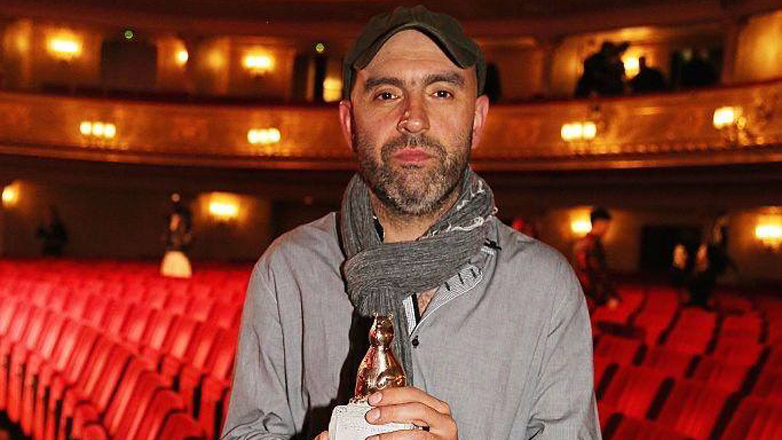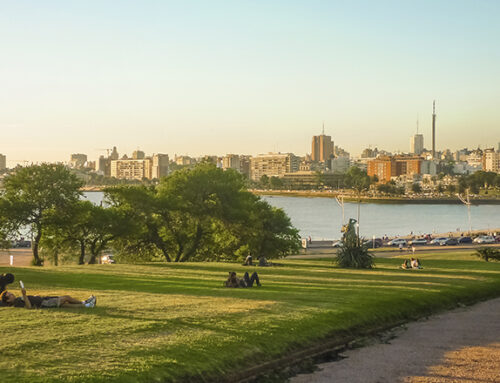The award acknowledges the “20 year struggle of the trans community in Uruguay” as well as the film for its “intimate and powerful” insight.
Avenues are wide, designed to accommodate several rows of tanks. On the outside, buildings still retain the coldness of a war that never took place and which split the world in two. But on the inside they have experienced a renaissance, transformation and they have been filled with the warmth of the creativity that dwells within. This is Berlin 2015 at the 65th international film festival.
Best known as the Berlinale, the 2D bears welcome you to a delightfully retro building which today will serve as the backdrop for The new man. Not the Che Guevara, not those of the Cold War, but one who lives in Montevideo. One who everyday walks the streets of the Uruguayan capital with a story that few would have imagined.
It is a story that Aldo Garay has taken the trouble to tell. The director, with the production of Cordón Films, has just released his latest work in the Teutonic country: The new man (El hombre nuevo). The documentary portrays the story of Stephania, a trans woman born Roberto who emigrates from her native Nicaragua at age 7, adopted by a couple of Tupamaro militants, to go through the revolutionary political militancy, poverty and a life on the fringes of the Montevideo society.
Upon seeing her reestablish contact with her biological family, Garay follows her back to Nicaragua to reunite with siblings and parents, and give closure to a huge family mystery in her life.
Drugs, handling weapons and being exposed to violence, prostitution and discrimination on a daily basis has been part of Stephania’s life, whose story has become almost unbelievable to most of those who have heard it.
Garay met Stephania 25 years ago, when she just began to take her final identity as a woman and having just ended her relationship with her adoptive parents.
In the film Gary has included, as a detail in a Richard Linklater style, footage, recordings he made himself of his subject 20 years ago. The main character’s transformation does not go unnoticed: from her physical appearance to what is conveyed through gestures, expressions, the director depicts a very realistic transformational arc of the character.
Being able to communicate concepts without using words is one of the seventh art’s virtues, a skill well developed by Garay and cinematographer, Diego Varela, in the story of a divided, lonely and hardened woman. The documentary tells a reality short of glamour with a strong visual and cinematographic language, accompanied by a soundtrack which is sensitive and moving composed for the film by Daniel Yafalián, who has worked with Garay on previous projects.
Not surprisingly The new man won the Teddy award for the best documentary on LGBT theme, an award given in the framework of the Berlinale which acknowledged the “20 years of struggle of the Uruguayan trans community”, as well as the film for its “intimate and powerful” insight.
Among ancient crystal chandeliers and a privileged view of Berlin’s telecommunications tower, El Observador spoke with Aldo Garay amidst the commotion of one of the most prestigious film festivals in the world.
The trans issue was under debate in 2014. Could The new man be part of the wave of awareness about this community?
Much is said about the rights agenda, but I believe this film runs parallel to that. Because it is not an activist film from the standpoint of the trans claim; neither she says it nor the film is set that way. What is portrayed here are many stories. It is not just about being trans. Here we are talking about abuse, parents who do not take proper care of their children, abandonment, the ideological failure of a project on the development of a different man. There are many things. And perhaps when taken as a whole the rights agenda could fall within. I think that the fact that every person who watches this film can take up the point they want is far more interesting.
What has the experience of the release at the Berlinale been like?
Tickets were sold out for the first screening of the film and during the second the theater was almost full. Interaction and exchange with the audience was superb, very different. There were very innovative things, such as having seen a parallelism between that new man and East Germany, for example. The story does not remain pigeonholed in a sensitivity or code of understanding and comprehension which is exclusive to Uruguay, they are much more universal. Based on what we have checked so far with the audience, we believe that the story is universally understandable and that, something we have always desired from the beginning, in addition to telling the story and being clear, there is a sustained emotional development. The film works on emotions.
Screening amidst applauses
The film ends with the same context, the same streets of Montevideo with which it began. On the other side of the world, the golden curtains were drawn in a theater of Soviet proportions and, from the 700 seats emanated the burst of applauses which took Garay back on stage to thank the audience.
Once the room was empty, a group of students approached the director. They thanked him profusely and wanted to know what happened to Stephania, how the story went on. In the documentary, as in real life, her story does not close perfectly. Life is not like that.
Source: El Observador





